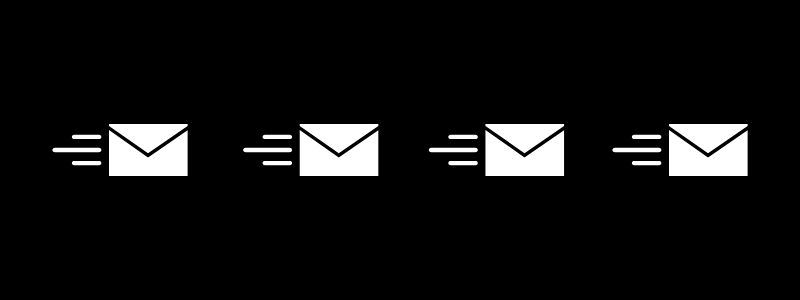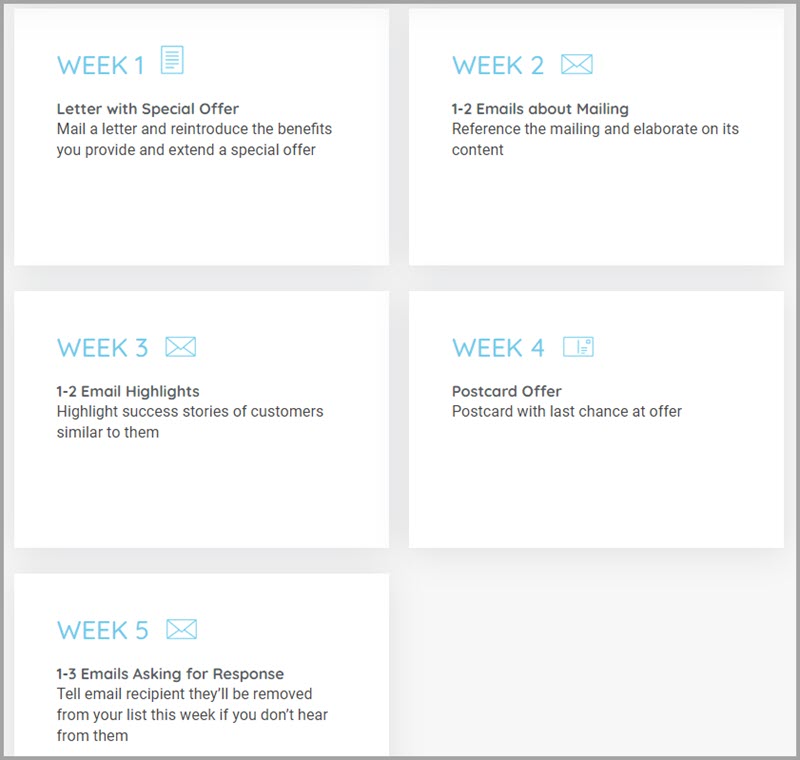Email marketing is an incredibly powerful way to connect with dental clinicians and increase your brand awareness. Over 3.9 billion people use email worldwide – more than 50% of the global population. That means that companies who aren’t using email effectively are missing out on an enormous potential to engage with their customers, scale their business, and increase revenue.
Most brands are familiar with the concept of an email newsletter to keep their subscribers informed. However, newsletters lack the ability to stay at the forefront of your subscribers’ minds and drive up engagement numbers.
That’s because newsletters are focused on engaging with your entire email list at once. On the other hand, an email drip campaign can be designed to target specific types of customers. For example, if someone signs up to learn more about your dental lab product – you can initiate a targeted email drip campaign to introduce them to your business and get them excited to engage.
Email drip campaigns for dental labs present a great opportunity to engage with your customers, generate new leads, and ultimately convert more sales. Let’s dive into the details so you can see how impactful these campaigns can be for your brand’s success.
What Is an Email Drip Campaign?
An email drip campaign is an automated set of emails that initiates when a user performs a certain action. All of the emails in a drip campaign are written beforehand, so once the user’s action is performed, the email campaign gets sent automatically.
What sets email drip campaigns apart from typical email campaigns is that they can be highly targeted for customers at different stages of your sales funnel. For example, you can have one drip campaign for customers who leave items in their cart at checkout and another for people who’ve signed up for your blog.
This specific targeting is what makes email drip campaign engagement so high. In fact, companies that use targeted email marketing have seen up to a 760% increase in revenue.
Here’s a brief example of how an email drip campaign can be structured to entice customers to upgrade to a premium service after they’ve started a one-week free trial.
- Email 1 (sent on signup)
The user will get an email as soon as they sign up to welcome them to the free trial. - Email 2 (sent 2 days later)
An informative email that tells the customer how to maximize their free trial. - Email 3 (sent 4 days later)
Introduce the key differences between the paid service and the free trial. The email should focus on the benefits of going premium and offer the option to upgrade. - Email 4 (sent 7 days later)
Alert the customer that their free trial is ending later in the day and make a strong pitch for the premium, paid service.
Email drip campaigns can be built right into the fabric of your business. That means that once a customer takes an action (like signing up for a free trial) the email drip campaign gets sent out automatically, according to a predefined schedule. But the real beauty of these campaigns is their flexibility to be implemented in a host of different ways (which we’ll get into below).
Here’s an example of a drip campaign flow.
Marketing Benefits of Email Drip Campaigns
The short answer is this: the more often people engage with your site, the more likely they are to convert into paying customers.
Effective email drip campaigns allow people to build a better relationship with your brand while keeping your brand in their awareness. It’s easy for people to visit a website, sign up for a free eBook, and then forget about a brand completely. You have to stay in contact if you want to convert anyone from an interested lead to a paying customer.
As mentioned above, email drip campaigns are a great marketing tool because they’re highly targeted for specific people, at a specific stage in your sales funnel. This is great for building trust because it allows you to provide more relevant, personalized content in your messaging.
Personalized emails connect with people better and statistically increase engagement rates across the board. 82% of marketers have reported an increase in open rates through email personalization. And increased open rates mean more opportunities to sell someone on taking a specific action.
When you implement them properly, email drip campaigns are an excellent way to consistently grow your brand. Once they’re set up, you can automate the entire process so your campaigns get sent out automatically without sacrificing a ton of overhead.
The Best Ways to Use an Email Drip Campaign
The only way to maximize the benefits of an email drip campaign is to be extremely clear about a couple of things:
1. Which customers you’re targeting2. Your goal for the campaign
Remember that each campaign is designed to connect with a specific group of people, for a specific purpose. The following list is not definitive by any means, but these are some of the best ways to run email drip campaigns.
Lead Nurturing
As you know, not everyone who engages with your brand is going to make a purchase right away. The goal of lead nurturing is two-fold: guide potential customers toward making a purchase and develop strong relationships with them through your brand. Companies that neglect to run lead nurturing campaigns are selling themselves short.
The stats are clear: companies that don’t perform lead nurturing end up losing 80% of their leads – meanwhile, companies that implement a lead nurturing strategy generate 50% more sales while spending 33% less.
The stats are clear: companies that don’t perform lead nurturing end up losing 80% of their leads – meanwhile, companies that implement a lead nurturing strategy generate 50% more sales while spending 33% less.
Customer acquisition is a process. It’s rare that someone will visit your site for the first time and make a purchase that same day. In fact, a report by Marketo found that 50% of leads aren’t ready to buy the first time they engage with a brand. An email drip campaign is one of the best ways to nurture your leads, build trust in your brand, and ultimately, convert more paying customers.
Welcome New Customers
Whenever you acquire a new email address — whether it’s from a newsletter signup, a product purchase, or an eBook release — it’s a great time to engage and keep your brand in their sights.
An email drip campaign provides much more value and engagement potential than a simple “thank you” email. That’s because an email drip campaign keeps the value coming over a longer period. It ensures that your new customers don’t quickly forget about their purchase with you and move on. In the long-run, retailers that send out an email drip campaign after a customer’s first purchase make 13% more revenue than those that just send one.
Re-engagement Campaigns
These are for your long-time customers who haven’t interacted with your brand in a while. The goal here is to re-engage with your customers and win back their interest in your brand.
You can use these to showcase new products, discounts, or offers and entice people to revisit your site. Sometimes all it takes to get someone to come back is to send out a simple ‘We miss you!’ email.
Abandoned Cart
If you run an eCommerce brand, it’s bound to happen: a customer clicks buy, starts filling out their information, but doesn’t complete the purchase. In fact, the Baymard Institute found that 67.35% of online shopping carts are abandoned. That’s a lot of missed opportunities…
Image source can use an email drip campaign to entice those customers to come back and complete their purchase. The campaign can be initiated automatically as soon as a customer leaves your site with an item in their shopping cart.
Educational Campaigns
An educational email drip campaign is focused on providing actionable insights and value to your customers. They’re a great way for brands to increase their credibility amongst their customers and stand out from the competition.
For example, a fitness center could offer their customers the option to join a free six-pack abs course. Over a series of emails, the customer will be introduced to real ab workouts and tips they can use to improve their physique.
Although these campaigns aren’t directly focused on making a sale, they’re great for building rapport with people who’ve already shown interest. You’ll increase rapport, increase your brand’s reputation, and build the trust that people need to actually make a purchase down the line.
For more information about dental lab email marketing campaifgns, call 888-715-9099. or visit DentalLabSupport.com












